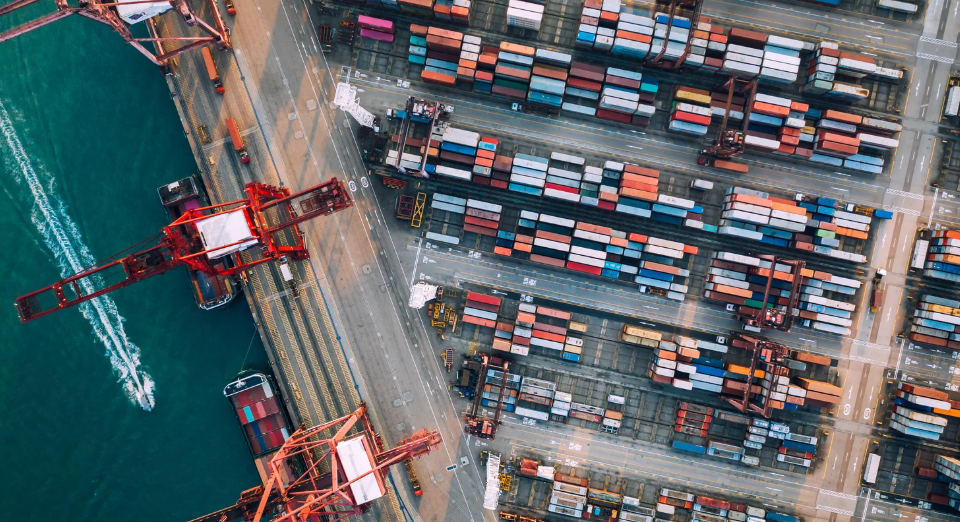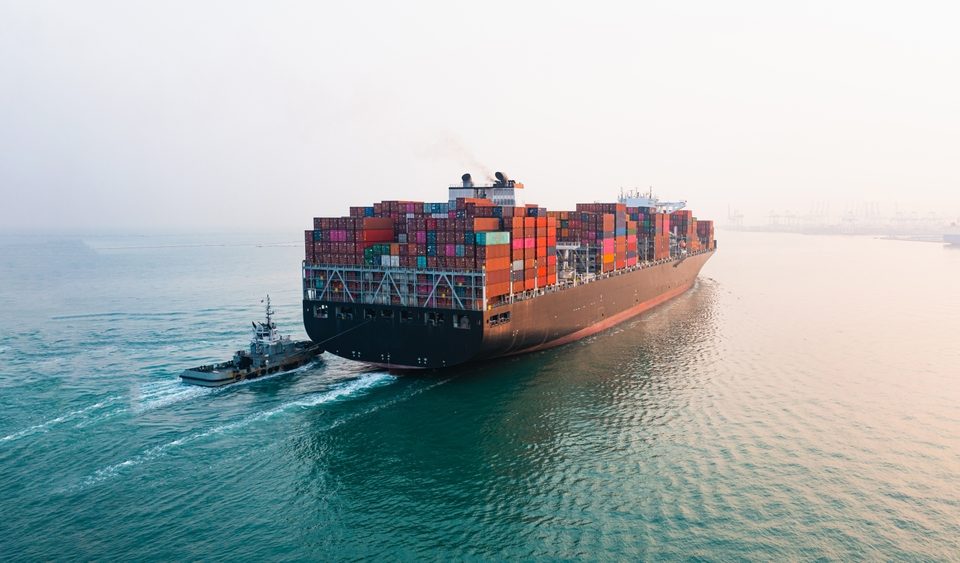
Top 10 Trade Compliance Actions Webinar
December 10, 2021
Port Congestion Update 12/17/21
December 20, 2021Weekly Vessels Anchored and at Terminals as of 12/10/2021
LA & LB: Anchored 34 | Terminal 28 | Loitering 58*
Oakland: Anchored 1 | Terminal 8 | Drifting (nil)
NWSA: Anchored 2 | Terminal 7 | Drifting 6
Vessel Congestion Update: On December 8, 2021, the Southern California Marine Exchange reported 92 container vessels in the Ports of Los Angeles (LA) and Long Beach (LB). Of the 92 container vessels, 34 container ships are anchored or loitering within 40 miles of the “in port” zone, and 58 container ships are loitering or at slow speed steaming outside the SAQA area. On December 7, the backup was 96 container ships, an all-time high. Container vessels are waiting an average of 19.5 – 28.1 days to reach a terminal to unload the containers.
The Marine Exchange unveiled a new methodology for counting container ships that are within 40 miles of the ports (referred to as “in port”) and those outside 40-miles. The new queuing system for container vessels as of November 16, 2021, is based on departure from the last port rather than the arrival at the Ports of LA/LB. Vessels now slow speed steam across the Pacific or loiter elsewhere outside of the Safety & Air Quality Area (SAQA). Many vessels have relocated or moved away from the port anchorages/coastline areas and are positioned 150 miles or further out into the Pacific. The action to move the vessels out further was done voluntarily by the carriers and it has helped reduce the dirty diesel particulates falling on nearby residents’ homes and properties from running the vessel engines 24/7. According to the U.S. Coast Guard, the relocation will increase vessel safety of the accumulating number of vessels as winter storms approach. The action has sharply reduced the number of ships visually seen along the coastline.
*Note: Loitering = Container Vessels outside the SAQA area/Slow speed steaming from outside the “in port” area.
LA/LB Postponement of Container Dwell Fee Remains on Hold Until December 13, 2021
On December 6, 2021, the Ports of LA/LB announced it would again hold off on charging the fee for another week, until December 13, 2021. Since the temporary policy was approved on October 29, 2021, both ports approved the fee that would be charged to ocean carriers for each import container that falls into one of two categories: (1) For containers scheduled to move by truck, the ocean carriers could be charged for every container dwelling nine days or more, and (2) For containers moving by rail, ocean carriers could be charged if a container dwells for six days or more. The ports could charge ocean carriers in these two categories $100 per container, increasing in $100 increments per container per day until the container leaves the terminal. In mid-2020, the ports have indicated that, on average, prior to the pandemic-induced import surge, containers for local delivery remained on container terminals for under four days, and containers destined for trains dwelled less than two days.
Northwest Seattle Alliance (NWSA) Terminal Dwell Fee
Seattle/Tacoma Terminals have also implemented container dwell fees. Implementation of fees and policy of assessments differ from stevedoring terminals, within NWSA.
In Seattle, the fee assessment for Stevedoring Services of America (SSA) port terminals 5, 18, and 30 began on December 1, 2021. The nexus for the fee, according to the various terminal operators, is attributed to the failure of importers to pick up their containers timely from the yards. They indicate it has created congestion issues that have prevented terminal operators from properly and timely servicing vessels. They remain hopeful the additional storage charge will encourage cargo owners to pick up their containers, which will allow the terminals to properly service vessels at their ports. Once it has been accomplished, the temporary storage charge/fee will cease. The dwell fee will be in addition to existing demurrage and port tariff fees:
- No charges for free time (up to five days after a container is available for delivery)
- $50 per day for the next five days of storage thereafter (days 1-5 after free time)
- $75 per day for the next five days of storage thereafter (days 6-10 after free time)
- $100 per day for the next five days of storage thereafter (days 1-15- after free time)
- $150 per day for any days thereafter
The importer of record will be responsible for paying or arranging payment, and once the fee has been paid the container will show available. The fee currently cannot be paid online.
At Husky, local import units that have exceeded 15 calendar days on the terminal will incur a $315 Long Stay Rehandling Charge (LSRF), effective November 1, 2021. Payment is due prior to release. Washington United Terminals (WUT) revised the (LSRC) fee in the hope of moving more local import cargo off the dock. The fee will apply to local import containers that have been in an available location longer than 6 days and on terminal 16 days or longer. The fee remains $310 per container and WUT has established that the fee will be applied on a temporary basis to all loaded import containers, in addition to existing demurrage and port tariff fees.
Port Action(s) Taken to Relieve Congestion
As most major port complexes are being constrained from expanding, they continue to look for relief. On the West Coast, Long Beach is partnering with the Inland Port of Utah and the Northwest Seaport Alliance is also aggressively moving to partner with inland destination ports.
Georgia Ports Authority (GPA) and South Carolina Ports Authority have both successfully established multiple inland port sites. North Carolina Port Authority is moving forward with its own inland port. By January 2022, the GPA will open 670,000 TEU’s of new annual capacity at Garden City Terminal. In early March, 155,000 TEU’s of additional terminal capacity will be available, and by June another 850,000 will come online at the port. The projects will deliver a total capacity increase of 25% in six months. At one terminal, GPA is growing by another half-million TEU’s in annual capacity by expanding its inland port strategy to include flexible “pop up” container yards near manufacturing and distribution centers. The authority has also activated the yards in partnership with its two Class I rail providers, CSX and Norfolk Southern, as well as regional property owners. Four locations in Atlanta, Savannah, Statesboro, and Murray County are operational, bringing cargo closer to customers and increasing capacity by reducing unnecessary container storage time at the Garden City Terminal. Executive Port Director Lynch, stated in part: “With the new capacity arriving and customers clearing cargo more quickly, the Port of Savanah has already seen a dramatic drop in the length of time containers are on the terminal.” Further stating: “the number of import containers on port for more than four weeks has dropped by 53% compared to earlier in the quarter.”
It was reported the Port Authority of NY/NJ has not established its own inland port, however, has worked with the railroads to build out intermodal capacity.
Please contact your Western Overseas representative with any questions.





